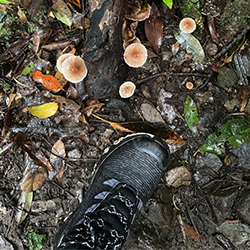Total Items: 0
Sub Total: $0.00

Lauren Clark // 30 Dec 2025
The best year ever doesn’t just happen; plan ahead with intention to make space for your adventures....
Read More

Hamish Lockett // 23 Dec 2025
If you’re planning a ski season in Japan this year and wondering what to pack, Hamish Lockett is her...
Read More

Adam Inglis // 05 Dec 2025
Whether your loved one is a seasoned trail runner or gearing up for their first marathon, finding th...
Read More

Lauren Clark // 04 Dec 2025
Quick answer: To remove a leech, slide a blunt edge (fingernail etc) under the small sucking end to ...
Read More

Maggie Slomiak // 03 Dec 2025
Travel is such a huge part of the modern world. We are privileged enough to be able to travel far, a...
Read More

Adam Inglis // 24 Nov 2025
Wild Earth’s Black Friday Sale is here, and if there was ever a time to treat yourself to that piece...
Read More

Lauren Clark // 17 Nov 2025
Ben Southall speaks with Elspeth Beard; a pioneer of solo motorcycle travel and the first British wo...
Read More

Elise Young // 12 Nov 2025
Struggling to find the perfect gift for the adventurer in your life? ...
Read More

Sonia Ware // 05 Nov 2025
If you love dirt trails, big views, and spontaneous camp adventures, these are my ride-or-die gear p...
Read More

Abby Koehler // 31 Oct 2025
I’ve rounded up my favourite gifts of the season - and the best part? They’re all under $100!...
Read More

Jemma Mead // 25 Oct 2025
We all know that one friend who's never home - their suitcase is always half-packed, their passp...
Read More

Buha Bali // 17 Oct 2025
The CCC isn't just any race, it's one of the most iconic and challenging ultra-trail events ...
Read More

Carolyn Smith // 15 Oct 2025
When it comes to finding the perfect day pack, it can be overwhelming with what is on offer. I find...
Read More

Georgia Suttie // 10 Oct 2025
You’re an avid day-hiker and weekend warrior, and you want to take the leap into overnight or multi-...
Read More

Scott Sattler // 26 Sep 2025
So, for you, I have put together a list of some of the best fleeces in 2025, highlighting different ...
Read More

Adam Inglis // 21 Aug 2025
If your dad’s idea of a perfect Father’s Day is a trail run, a campfire, or planning his next big ad...
Read More

Adam Green // 19 Aug 2025
How I’m juggling nappies, long runs, and early mornings and why the adventure doesn’t have to stop w...
Read More

Josh Fletcher // 18 Aug 2025
This Father’s Day will be my third. Which means I’ve been on plenty of zero and hero outdoor adventu...
Read More

Geoff Wilson // 15 Jul 2025
Camping in the Arctic, Antarctic, or high Alpine regions is a test of preparation and resilience. It...
Read More

Stacey Clark // 03 Jul 2025
I’ve always enjoyed hiking but had never done an overnight hike until my early 50’s. By chance, my n...
Read More